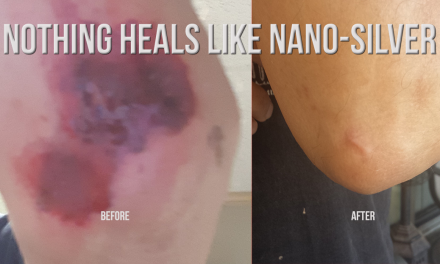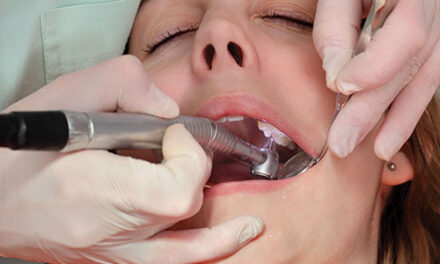Just like your body depends on certain nutrients to stay in good shape, the health of your teeth and gums are affected by what you eat. Certain foods can help increase the risk of tooth decay and promote plaque buildup, while other foods play a significant role in preventing tooth and gum disease, including bone loss.
Eating healthy foods can help improve oral health by changing the pH of the environment in your mouth. The more acidic the environment of your mouth becomes, the more harmful bacteria thrive. It’s important to learn and choose what foods will result in healthy teeth and gums, and which foods will cause you to hide your smile. This article will help you learn the best and worst foods for oral health.
Low Versus High Glycemic Foods
The glycemic index ranks foods from 1 to 100 based on their effect on blood sugar levels. Most people love carbohydrates, such as breads, cakes, sugar, and starchy foods like potatoes. These are the same type of foods that don’t promote a healthy mouth and are ranked with a high glycemic index (GI).
The health of your teeth and gums depend on how much plaque builds up and what you do about it. Plaque is a sticky material that mostly contains bacteria and food. Bacteria break down carbohydrates and sugar and convert them into acid, leading to tooth decay and gum problems. If not treated, a small tooth decay or even decalcified (area where minerals are leached out, weakening the tooth surface) area can become a tooth abscess.
Maintaining a diet consisting mostly of low to moderate GI foods is best.
- Low GI (under 55) foods include beans, barley, pasta, most fruits, juices, non-starchy vegetables, nuts and dairy products.
- Moderate GI (56 to 69) include foods such as whole wheat and brown rice, corn, table sugar, honey, soda, sweet potatoes, bananas, mangos, and papaya.
- High GI (70 to 100) include white bread, white rice, instant oatmeal, most breakfast cereals, potatoes, and melons.
High GI foods and how they affect oral health have been studied for many years, starting with Dr. Weston Price in his book Nutrition and Physical Degeneration. Dr. Price reported that tooth decay was proportional to the type of food the teeth were exposed to. The more refined the food, the more prevalence of tooth decay.
It’s best to stick to whole types of foods with a low GI, and save the high GI foods for very rare occasions. There are many sites that include a list of foods and their GI index, including the newsletter from Harvard Medical School.
Supplements for Healthy Teeth and Gums
Supplements are important for the body as well as your teeth and gums:
- Calcium—important for building strong teeth and bone. If your body needs calcium, it gets it from your bones. With weak bone, teeth become loose. This is why you need adequate amounts in supplement form or from your diet. From your diet, it’s included in sardines, canned salmon, green leafy vegetables, cauliflower, cabbage, almonds and fortified orange juice.
- Phosphorus—important for strong teeth.
- Zinc—helps with immune function and soft tissues.
- Antioxidants—help with health of soft tissue and immune function. Helps fight off and prevent harmful free radicals. Foods high in antioxidants include blackberries, walnuts, strawberries, blueberries, artichoke hearts, and cranberries, small red beans, red kidney beans, prunes, pecan, and apples.
- Vitamin C—important for healthy gums, helps with connective tissues, collagen formation, and immune system. Foods high in vitamin C include citrus fruit, broccoli, kale and berries.
- B- vitamins—help with stress and they help fight inflammation. Beans, legumes and green vegetables are high in vitamin B. Vitamin D helps regulate blood levels of calcium and phosphorus. With inadequate vitamin D, your body can’t absorb calcium. Milk and cod liver oil are great sources of vitamin D
- Coenzyme Q10—provides energy to help heal wounds, digest food and maintain healthy muscles. For healthy gums, it’s been reported to help with bleeding gums and to reduce inflammation. You can get coenzyme Q10 from pork, beef, chicken liver, and soybean. Parsley also is a good source, which can help fight bad breath.
- Probiotics—from any source, probiotics may help decrease periodontal disease, gingivitis and plaque.
Sweeteners
- Sweeteners such as sucralose (Splenda) and aspartame (Equal) don’t appear to cause cavities, however, artificial sweeteners are controversial as far as general health.
- Xylitol has shown promise in helping to prevent tooth decay. Studies report chewing gum with xylitol after meals decreases the risk of tooth decay.
Stevia is a natural sweetener that doesn’t appear to have any negative effects on oral health, but not enough research has been completed to determine if it is helpful for oral health.
Tips for Healthy, Beautiful Smile
No matter how healthy your diet is oral hygiene cannot be neglected. The following are important tips for a healthy smile, no matter what age you are.
- Daily oral hygiene routine—Floss and brush daily. Within 24 hours bacteria start to cause damage. Floss first and then brush with a xylitol toothpaste that contains calcium pyrophosphate. This helps reverse decalcified areas that have been attacked by bacteria. If you remove plaque daily and adequately, your risk of poor oral health decreases.
- Avoid smoking and tobacco products—These products can cause major problems in your mouth, not to mention risk of oral cancer.
- Eat healthy snacks—Chew on raw vegetables and fruit in between meals. American Dental Association reports that 23 million children and teens are overweight or obese. This increases the risk of serious diseases such as diabetes and heart disease.
- After meals—Chew xylitol gum.
- Limit high GI foods—Beverages and food high in sugar and simple carbohydrates bring about an acidic pH in your mouth, which harmful bacteria love and thrive on.
- Manage stress—Get regular exercise to boost your immune system and get the blood circulating. Exercise helps strengthen bones, which are an important part of your teeth and their supporting structure.
- Vegetables—Your meals should contain half your plate with fruits and vegetables.
- Grains—Stick with whole grains such as whole wheat bread and brown rice.
- Dairy—Low-fat or fat-free dairy foods are best for adults.
- Protein—Lean protein options are important for a balanced meal. These include lean beef, skinless poultry and fish.
- Empty Calories—Candy, mints, cookies, cakes and chips are among the enemy list of oral health. Minimize or totally take them off your list of foods.











